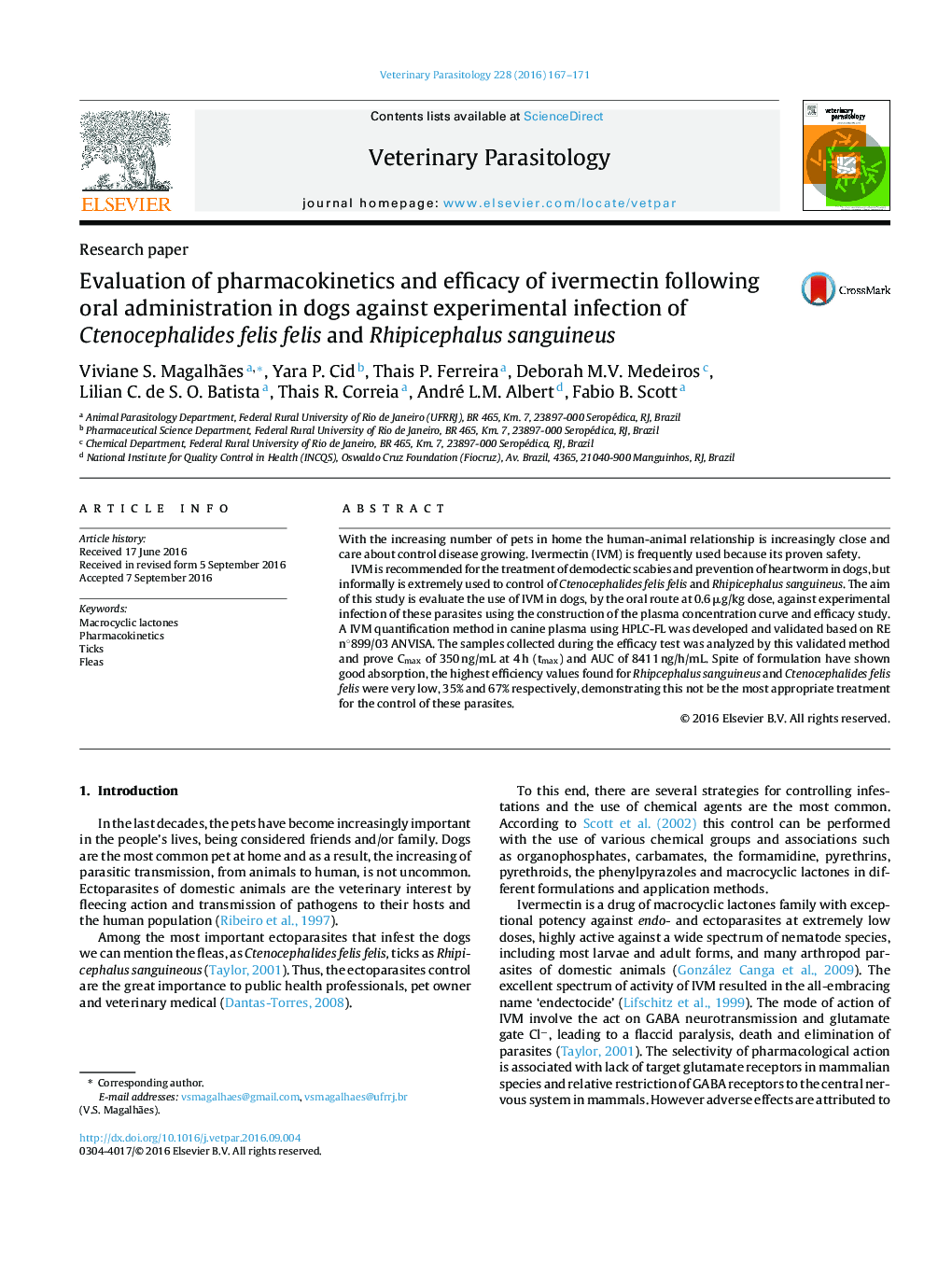| Article ID | Journal | Published Year | Pages | File Type |
|---|---|---|---|---|
| 5801970 | Veterinary Parasitology | 2016 | 5 Pages |
â¢Use of ivermectin informally to control of Ctenocephalides felis felis and Rhipicephalus sanguineus.â¢Evaluate the use of ivermectin in dogs controlling ticks and fleas with pharmacokinetic data and efficacy study.â¢Low efficiency values were found despite IVM have been found in plasma. It cannot be used to control ticks and fleas in dogs.
With the increasing number of pets in home the human-animal relationship is increasingly close and care about control disease growing. Ivermectin (IVM) is frequently used because its proven safety.IVM is recommended for the treatment of demodectic scabies and prevention of heartworm in dogs, but informally is extremely used to control of Ctenocephalides felis felis and Rhipicephalus sanguineus. The aim of this study is evaluate the use of IVM in dogs, by the oral route at 0.6 μg/kg dose, against experimental infection of these parasites using the construction of the plasma concentration curve and efficacy study. A IVM quantification method in canine plasma using HPLC-FL was developed and validated based on RE n°899/03 ANVISA. The samples collected during the efficacy test was analyzed by this validated method and prove Cmax of 350 ng/mL at 4 h (tmax) and AUC of 8411 ng/h/mL. Spite of formulation have shown good absorption, the highest efficiency values found for Rhipcephalus sanguineus and Ctenocephalides felis felis were very low, 35% and 67% respectively, demonstrating this not be the most appropriate treatment for the control of these parasites.
Graphical abstractPlot of the mean plasma concentration vs. time curves of ivermectin following orally (0.6 mg/kg), administration to dogs (n = 10)Download high-res image (73KB)Download full-size image
